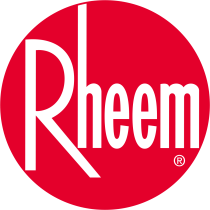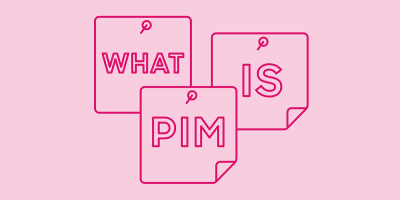Rheem


Highlights
The global, multi-brand company needed a DAM system capable of serving the needs of the Rheem Australia, Rheem Chile, and Solahart Australia divisions.
Different teams in Rheem’s divisions needed a DAM solution to streamline asset organization and sharing processes, providing a single source of truth and controlled access.
Acquia DAM and PIM, including the Assets, Entries, Insights, and Portals applications
Rheem Australia, Rheem Chile, and Solahart Australia each use Acquia DAM in the way that best suits their specific needs, saving time and allowing content teams to focus on generating new content.
The Client
Founded in 1925, Rheem is a global leader committed to delivering innovations that are energy efficient and support a sustainable future. Rheem Australia produces water heating, pool and spa heating, and renewable energy solutions.
The Situation
Rheem (Australia and Chile) and Solahart Australia’s marketing initiatives extend across multiple brand websites, e-commerce sites, online, digital ads, social media, and varying distribution and dealer channels.
COVID drove e-commerce demand
When COVID hit and more Australians turned to online shopping, Rheem Australia’s marketing team realized they needed to transition from outdated methods of managing and distributing digital assets to a more efficient, modern solution. “Before COVID, we had little demand for supplying product information. However, as e-commerce emerged as a critical channel, it became evident that we needed to provide e-commerce data to our merchants and vendors efficiently,” said Janet Niemi, Assistant Product Manager for Rheem Australia.
Rheem Australia required a system that offered ease of use, flexibility, and adaptability. “We collaborate with marketers in different countries and needed a DAM system that could cater to each of our specific requirements,” said Niemi. “And we needed something to help us effectively capture and organize data for our multiple product variants. We employ a parent-child hierarchy for our products. For example, we have a base model water heater and numerous variants with different power methods (e.g., electric or gas), sizes, etc. Managing product info was extremely tedious.”
Dealer network needed access to assets
Niemi’s colleague at Solahart, a renewable energy business owned by Rheem Australia, had her own reasons for wanting a platform capable of helping the company wrangle its digital assets. Carla Jakobsen, Advertising and Promotions Manager at Solahart, explained, “We work slightly differently from other divisions in that independent dealerships sell our product all around the country and these businesses have product exclusivity in their area. We support them with marketing activities planned at a national level. Still, the dealerships also organize local advertising in their areas, and this platform provides them with easy access to fresh and current assets needed for this purpose.”
Direct-to-consumer sales approach
Unlike in other markets, Rheem’s Chile division sells products directly to consumers. “Rheem LATAM is a direct-to-consumer market with a strong e-commerce and brick-and-mortar retail presence. So our digital presence needs to be strong,” said Sara Chinchilla Martinez, Content Specialist at Rheem Chile.
The Challenge
Fielding endless one-off requests
Rheem’s fragmented and isolated approach to managing digital assets led to various challenges. “Our usual practice involved utilizing Excel spreadsheets for managing product data. While sharing digital assets and product information through Dropbox or email, we didn’t supply much product information management [PIM] data. But then COVID hit, and our distributors started requesting technical product data,” said Niemi.
“To handle the requests, we had a large Excel sheet with 30 to 40 columns of data. For example, a distributor would ask us about a product’s height, width, and depth, and we’d extract the data and provide the distributor with product information via an Excel spreadsheet. While this method sufficed for handling one or two requests individually, distributors said, ‘We need 25 columns of data for most product models,’ which became time-consuming and arduous. We were regularly dealing with thousands of cells of data and fielding a ton of one-off requests,” said Niemi.
Relying on multiple sources for assets also meant that Rheem had no single source of truth. “If a distributor requested info, we’d send them a website link and let them know that was the information we had on a particular product. Or we may send them a specification sheet or product brochure — like a PDF — and distributors would have to extract the needed information,” said Niemi.
Offering controlled access
Solahart Australia faced other issues. Jakobsen wanted a way to share product information, images, and other important information with dealers and agencies but didn’t want to give them carte blanche access to all assets and files. “Before, we had everything on our website intranet, and we were not able to set different access levels to separate types of information,” she said.
Third-party marketplaces needed good product content
In the meantime, Rheem Chile was facing its own challenges. “Selling directly to consumers, we needed good product pictures and descriptions for third-party marketplaces and retail sites. But we needed a way to easily and effectively share our assets,” said Chinchilla Martinez.

The Solution
Acquia DAM helped Rheem overcome its numerous challenges.
Seamless PIM/DAM integration
Niemi and the project team met with different vendors to find a DAM offering to meet the company’s needs. “We chose Acquia DAM because of the seamless integration of PIM and DAM — many other vendors didn't offer that. They were either really strong on the DAM side or really strong on the PIM side. But we needed a platform that allowed PIM and DAM to collaborate seamlessly,” she said.
“As a B2B business, we share our digital assets and product information with vendors and distributors (merchants). Acquia DAM has streamlined our processes; it makes it easy for us to create, organize, and share information about both the parent product and all of its variants. It allows us to upload the data and create distribution channels, then provide data from that distribution channel to our channel partners or merchants,” said Niemi.
Solahart Australia enjoys greater flexibility and control
“Acquia DAM allows us to set different access levels for agencies and dealers. Now, we can separate info and user types. The main benefit of Acquia DAM is that we don't have to send an email every time a new asset is created — we just upload it to the DAM system. The newest assets always show first, so our dealers know when something fresh has been added. So that’s reduced our request level. To make it as easy as possible, we’ve put some how-to documents together, as we are constantly getting new users signing on to use the DAM, which helps them understand how to search and share assets. Because every asset is tagged, the search functionality is excellent,” Jakobsen said.
“We’ve had great uptake with the DAM system — we have more than 70 logins for dealers and agencies, and we’re currently testing a new level of access for installers, so they can only see the relevant installation and training materials,” Jakobsen said.
Solahart also found a way to protect the company’s sensitive training assets. “Now, we can share assets so that the user can see them in the Portal but is not able to download or share them. It’s a better way for us to share specific training resources that are meant to only go to our network,” said Jakobsen.
She also appreciates Acquia DAM’s Portals, which make it easier for her to share assets. “We've recently launched self-service Portals that come from the DAM site. So when we launch a product, we create a Portal with various digital assets, including technical instructions or videos. The Portal allows us a flexible and simple way to share assets and content in a branded, highly controlled environment,” she said.
Acquia DAM streamlines Rheem Chile processes
Acquia DAM has also helped Rheem Chile serve its small and large retail partners more effectively. “We use Acquia DAM to share advertising material and other assets. We use it for long-term assets and not just for a month-long campaign. Our users appreciate the convenience and ease of use. Between internal and external users, I think we have 100 people who access the DAM solution; our e-commerce team uses it daily, and the commercial teams use it weekly. I’m always following the downloads in Insights, and I’m the only one who uploads content, but everyone is allowed to download and share everything,” Chinchilla Martinez shared.
“We’ve set it up so that the smaller businesses we work with use Portals; we have a Portal with all the content segmented by category, type of product, etc. It’s been very useful because, in the past, I received a lot of requests of ‘I need this picture’ or ‘Please send me this particular asset,’ and we used WeTransfer and all sorts of other tools to share the info. When I get a request, I can show them the Portal, give them their access code, and let them know they can come back to me if they have any problems. That works awesome for our small hardware stores or smaller retailers,” said Chinchilla Martinez.
“Bigger retailers have their own B2B sites. Using Entries, the retailer can download our product spreadsheet, and the uploading process is much easier than we used to have,” she said.
The Results
Across the three locations, the teams recognized significant benefits from using Acquia DAM.
Time savings
“With Acquia DAM, we’ve reduced the time it takes to fulfill asset requests. Previously, all of our assets were mixed together. But with Acquia DAM, our assets have their own domain,” said Niemi.
Chinchilla Martinez agrees that Acquia DAM has helped the company better organize its assets and streamline its processes. “Acquia DAM has been a big time saving for me — I don't get content requests as much as I used to. And when I do, I can direct them to the DAM site, where they can find the necessary information. Entries make it easier for me to share information like content/description/specs with our big retailer partners; I just download everything I need and then rename it and send it to them or upload it directly to their preferred platform,” she said.
One source of truth
Niemi appreciates that Acquia DAM has helped streamline processes. “Our biggest win is that the DAM system helps us with version control and accessibility. With that one source of truth, when we provide our merchants with an Excel sheet that pulls key product information, we know that we’re pulling it from one source. Acquia DAM has streamlined our process in supplying the data, technical brochures, product drawings, promotions, and digital images that vendors require for their e-commerce sites,” said Niemi.
Easy-to-tweak formats for different retailers
Chinchilla Martinez added, “Versions are awesome. I usually update our technical spreadsheets, data sheets, brochures, etc., once or twice a year. And I have everything linked to our site, so everything gets updated when we update it in the DAM system. It’s awesome. It saves me a ton of time. One of the features I most enjoy is that I can easily resize or change the format of our assets. For example, some retailers want images that are 2000 x 2000 while others want 1000 x 1000. Acquia DAM makes it easy for me to set up all my formats.”
Focus on creating new content, not just sharing old content
Acquia DAM has also allowed Rheem Chile’s content team to focus on what it does best: generating compelling new content. “Acquia DAM management is easy. With it, I ensure that everything is up to date, uploading new versions as they become available. And I work a lot with collections; I build collections by category, type of product, and brand — I manage 200 or 300 collections. For example, I have one collection with the first view of every product. Another collection has product icons. Because Acquia DAM is so easy to manage, I can focus on other things, like creating new content and updating content instead of just sharing content, which took up much of my time,” Chinchilla Martinez said.
Building on success with internal integrations
In the future, the teams plan on building upon its success with Acquia DAM with additional integrations. “Acquia is quite forward-thinking and always looking for new solutions, which is another reason we’re happy with Acquia as our DAM vendor. We plan to tackle some integration with our websites and with our partner sites in the near future. We’ll also look at ways to integrate the AI tools coming on board,” Niemi concluded.

